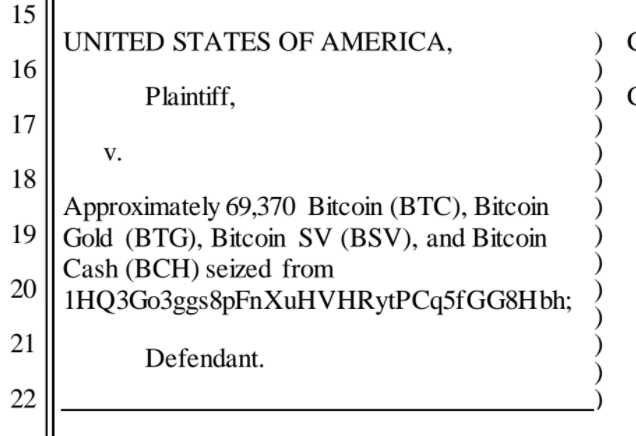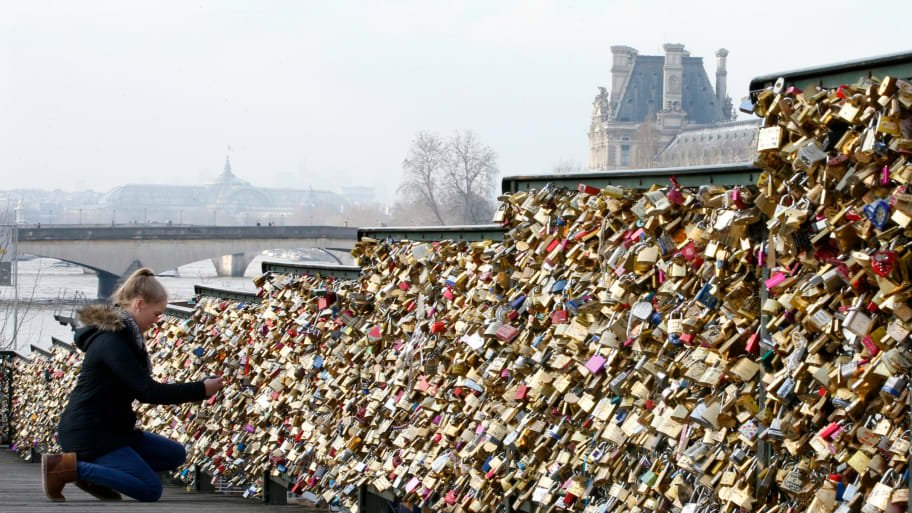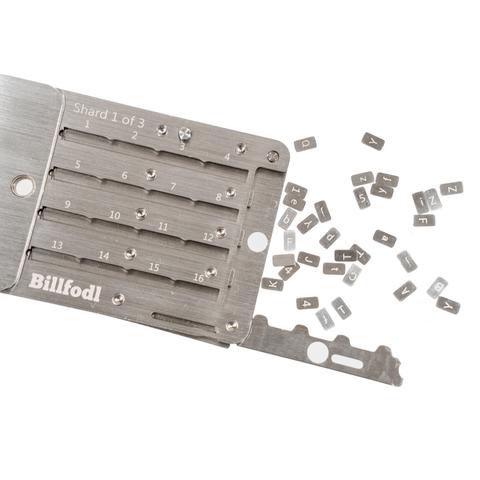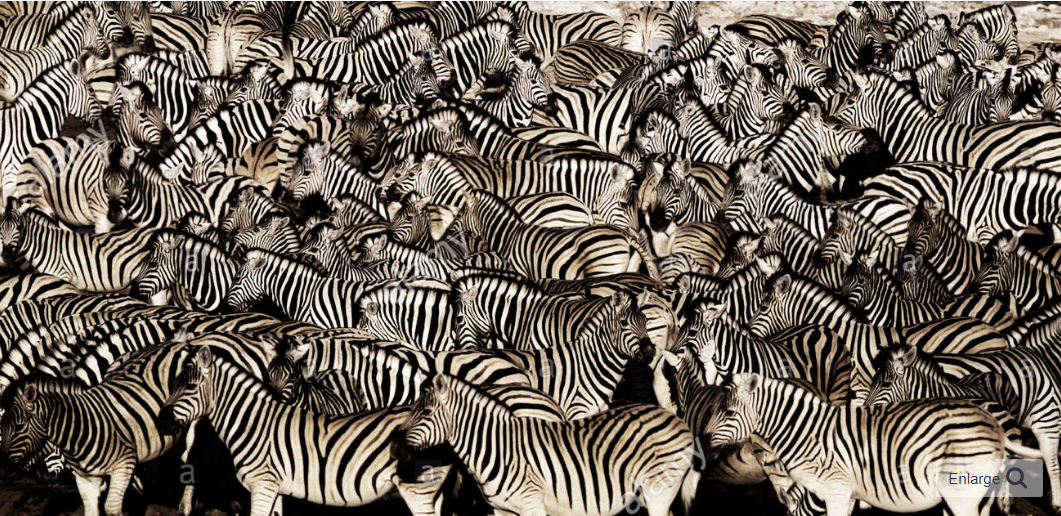Secrets in Plain Sight

Secrets in Plain SightThe Ai-Fi Incognito CloudThe Ai-Fi Incognito Cloud and BlockchainAi-Fi Crypton TypesCloud Storage and Metadata The Account-less Ai-Fi ChallengesThe Ai-Fi CryptonsCrypton TypesManaging Portable CryptonsThe Encrypted Crypton ContentAi-Fi Cloud Privacy GuaranteeCryptonization of Ai-Fi Cloud StorageSummary of Security PropertiesBIP-38Private Log for Crypton OperationsCrypton LogsTerms of ServiceProtecting Your CryptonsThe Care of Your CryptonsAi-Fi Bug Bounty for CryptonsDictionary or Rainbow Table Attacks Online vs. Offline AttacksThe SuperLockWallet Protection MechanismsGeneralOnline WalletsOffline WalletsProtection of Wallet PassphraseMobile App Hacks
The Ai-Fi Incognito Cloud
Among all its no-nonsense advice and lines of thought, brax.me advocates the adoption of the public Cloud Services for convenience and, most importantly, safety. It agrees with all IT experts in the recognition that the advent of cloud computing will continue to march forward and take over the bulk of our computing needs. There is a strong parallel between our money management relying on the banks and financial institutions, and the management of our digital assets outsourced to cloud services. However, although we don't hide our monies under our mattress any more, taking advantage of their "fungibility", cloud services still offer no counterpart to the anonymous safe deposit boxes in a bank vault. Without exception, all cloud services are account based and heavily regulated to KYC, which pretty much rules out the offering of anonymous services.
Our Ai-Fi Incognito Cloud is the implementation of a secret hiding scheme, laying the first stone in advancing the cloud services to include privacy protection by taking advantage of our "account-less" architecture in combination with a decentralized digital asset registry based on the latest blockchain technology. It is not a general purpose cloud service. Its only focus is to offer a privacy-preserving, pseudonymous and warrant-proof vault/safe facility for storing your highly private data or secret.
The Ai-Fi Incognito Cloud and Blockchain

The world-famous 69,370 Bitcoins stored at the address "1HQ3Go3ggs8pFnXuHVHRytPCq5fGG8Hbh" have been known since 2013. It is allegedly linked to Silk Road and easily seen by hackers all over the world for a full 7 years without being broken or stolen. Million other Bitcoin addresses on the Bitcoin blockchain are equally in view and out in the open without being considered vulnerable as long as the private keys are safely stored. The current value for this single "1HQ3Go3ggs8pFnXuHVHRytPCq5fGG8Hbh" address alone is close to $1B. If we consider the asset value of all the crypto coins safely stored behind all those Bitcoin addresses on the Bitcoin blockchain at the current market cap of $280B, the proven strength of the Bitcoin public key cryptographic technology is truly impressive.
This example demonstrates that storing assets or secrets in the cloud can be anonymous and secure as long as:
- For anonymity, It must be account-less, hence password-free, without any linkage to owners' PII (Personally Identifiable Information).
- It must have at least 128 bits of entropy for cryptographic security guarantee.
- It must be immutable, based on a proven data redundancy and consensus protocol involving a substantial number of server nodes.
Ai-Fi Incognito Cloud for storing secret shares, packaged as individual "Cryptons", has comparable attributes listed above, with the following improvements:
- Unlike Bitcoin blockchain, Ai-Fi Incognito Cloud offers no means to enumerate all the Cryptons (accounts). This reduces the attack surface.
- For ease of retrieval from the Ai-Fi Incognito Cloud, Cryptons are generated through a memorable passphrase of around 100 bits of entropy, which is then coupled with a client-side Entropy Extender and achieves strength higher than 128 bits if so defined. The password stretching KDF (Key Derivation Function) achieves the biggest gain, maximizing the ratio of crack time from 1 to 100,000 with Argon2 the preferred algorithm. This is battle-tested based on collected Bitcoin cracking data, further proving the successful exploitation of the entropy in a data stream by applying hash functions.
- Since a Crypton is invulnerable to attacks, its protection is as easy as replicating it over multiple storage sites. Its inherent personal nature rules out the need for a consensus building internal blockchain. Unlike writing down your secrets on a piece of paper, the Cryptons may be stored just about anywhere as long as the blobs of their encrypted content may be reliably retrieved. Since there are no transactions involving multiple Cryptons, its auditability is also assigned to individual Crypton owners, much like Google's "Certificate Transparency" technology for protecting SSL certificates.
Ai-Fi Crypton Types
Crypton is a file storage type supported by the Ai-Fi Incognito Cloud. They take advantage of the account-less pseudonymity afforded by Ai-Fi.net. They facilitate a novel cloud storage technology wherein the content, ownership, and all metadata pertaining to the "Cryptonized" data are shielded and untraceable.
Cloud Storage and Metadata 
The picture above is how we perceive our files stored in a public "cloud" traditionally. We first sign up to a service provider (AWS, Azure, Dropbox, etc.) for a subscriber account and then we submit our data and files to the service provider for varied levels of services under our account. We may also encrypt the content in order to prevent other unsavory characters, including even the service providers themselves, from peeking into our files. We typically share with the cloud providers our "metadata", namely the ownership, account identity, and time-stamped operations applied to those files, etc.
Invariably, files in the cloud are labeled and attributed to identifiable parties. Data theft in many cloud services are common occurrences. Many data breaches, including Dropbox concerning encrypted passwords and details of around two-thirds of cloud providers' customers, have been reported frequently. In addition to the threat of exposing one's file content, oftentimes the metadata associated with cloud storages may also be subject to attacks. The risk of losing office files in the cloud or leaking file content is sometimes manageable, especially when business owners by and large follow reasonably stringent data protection practices, oftentimes mandated by regulations, and backs up them periodically as a matter of course. However, in the case of high-value personal assets, the loss event or even the exposure of owners' identity may not be acceptable. Such is the case for Bitcoin assets, even the metadata of which is highly guarded in order to maintain the anonymity of Bitcoin transactions. Unfortunately, this protection of metadata for personal digital assets is not always guaranteed.
The Account-less Ai-Fi Challenges
Traditional service providers require your signing up for an account for the purpose of either collecting payments or conducting surveillance on private data to feed its business model.
In the case of Ai-Fi.net, since there is no "account" required for a user to interface with Ai-Fi services, it is difficult for hackers (or even the provider itself) to target any one individual. Even in the unlikely event that a file stored with the Ai-Fi Incognito Cloud is cracked, there is nothing in the encrypted content that would lead back to the originating owner. This is why the attack on Ai-Fi facilities involves the most arduous of conditions without any specific targets to aim at.
To further take advantage of this hallmark feature of account-less services, Ai-Fi.net serves any file storage requests without knowing the people behind them. This is a much more strict requirement than any other popular cloud storage services. By design, Ai-Fi eliminates even the services itself from being a suspect when compromises are discovered. Ai-Fi.net simply is not capable of recognizing any owners behind those files and data stored in its cloud. With strong encryption, enforced with crypto key pairs of high entropy, all files in Ai-Fi Incognito Cloud look alike without specific registered accounts to attribute to.
The Ai-Fi Cryptons
The Crypton represents an Ai-Fi storage type, taking advantage of the pseudonymity offered by the account-less Ai-Fi storage services. (There are many other Ai-Fi Cloud applications in the works, all tempting to take advantage of the same pseudonymity built into the Ai-Fi Incognito Cloud.) Behind the Crypton is a text file (currently supported file type), which are typically segmented by labels for different sub-contents.
A Portable Crypton has only 2 fields that determine how it is stored:

Quite a bit of flexibility is given to the setting of Entropy Extender. Our users may adopt a simple email address to thwart the dictionary attacks, or opt for a set of random bits to increase the entropy, in which case the Extender may need to be written down. Some users apply for a brand new email address for this express purpose of secrecy without resorting to their usual primary email address used daily. The selection of Entropy Extender should be commensurate with its usability consideration and the value of the contents to be protected.
The production of Cryptons is simply designed for storing an encrypted file in the Ai-Fi Incognito Cloud. Although it uses the technology of PBKDF (Password-Based Key Derivation Function) incorporating a Extender and a slow hash function, the generated key is not for communicating between two separate parties or between the Crypton owner and the service provider. Otherwise put, the "key" is used only by the Crypton owners to send Crypton to the cloud and later on retrieve it themselves privately. This Extender is not exactly public and conveniently becomes the recipe for acquiring more entropy bit, with the key stretching KDF "extracts-then-expands" the password into a pseudo-random key adding a tremendous amount of difficulty for password cracking (by incurring 100,000 times more cost).
A Crypton is produced from the public key of a cryptographic key pair. To the storage server, the public key or Crypton appears as a random sequence of 256 bits (with some housekeeping characters), which has similar, and optionally higher, cryptographic strength as the Bitcoin addresses. Users submit the Crypton (with payment as per situation) in order to store or retrieve the associated content, which is decryptable only by having the private key of the originating key pair. The Cryptons are usually submitted through the Tor anonymity network along with their associated files to further obscure their original sources and make it difficult to guess their owner based on any kind of heuristics.
To take an example, say your file or data is packaged and encrypted with a key pair, of which the public key becomes the Crypton ID: "GA5WNW6RGHQNNXICILLYDMEYO6NLATJP2C7WAHTGQFVGYQXLSLSAF46C". The challenge to any adversary trying to hack the content of this Crypton is to render the matching private key, which is proven mathematically intractable. The Ai-Fi Cryptons have the added advantage of not requiring the publication of the public key (or the Crypton ID). This may be contrasted with the privacy issues of Bitcoin addresses, which are inherently public as they are designed to conduct transactions involving multiple parties, whereas the Ai-Fi Cryptons are private and stay stealth. Short of obtaining the list of all existing Crypton IDs, the entropy for the combination of the key pairs and the hidden ID space of all the Cryptons afford us at least 120 bits of entropy. For this reason, Ai-Fi Incognito Cloud takes pains not to reveal the list of Crypton IDs under its care. This protection of the Crypton IDs through obscurity, built as an independent architectural layer above the public key infrastructure, enhances the resilience and security of the Ai-Fi cloud services for Cryptons.
Crypton Types
There are primarily two types of Ai-Fi Cryptons:
- Hosted Crypton: This is the Crypton type based on the public key of ED25519 keypairs. A Crypton name is mapped and hashed from a public key of around 160 bits of entropy (similar to the "unspent" Bitcoin account). The original keypairs for this class of hosted Cryptons are dedicated for this purpose and maintained in the Ai-Fi Wallet without involving in any other cryptocurrency transactions (unspent). The DigiVault offered in Ai-Fi Central, if opted to "Auto-Sync", will be entered into the Incognito Cloud as a Hosted Crypton. The collection of SecureEmail keys is also stored as hosted Crypton if opt-in is enabled. Hosted Cryptons live and die with their associated wallet.
- Portable Crypton: Unlike the hosted Cryptons described above, which can be deleted or become inaccessible, Portable Cryptons are based on passphrases, which are to be memorized, with optionally the (client-side) Entropy Extender for both thwarting the rainbow-table/dictionary attack and increasing the entropy. This Entropy Extender may be set as weak as the email address, cell#, ssn#, etc. for creating trivial variability or as something fully random and unique, to be automatically generated by the app. The portable Crypton is independent from your wallet and retrievable outside of your Ai-Fi Central App as long as the passphrase and Extender are precisely tendered. This concept of Crypton is originally inspired by the MiniLock scheme and has at least 100 bits of entropy without counting the extra randomness injected into the Extender. The user is not expected to memorize the Extender, which may be jotted down on a piece of paper or in a notebook and rely on the physical security to attain a reasonable degree of protection.
The Ai-Fi Incognito Cloud of Cryptons may be visualized as a herd of anonymous animals, each individually camouflaged and largely indistinguishable to the hackers. Most animals are seemingly wild, nameless and owner-less with mysterious origination. There is a large number of Cryptons randomly distributed in the Ai-Fi Incognito Cloud like those inscrutable animals in the herd:
The following picture offers another perspective on the protection scheme for Cryptons:

In order to open a lock, even in possession of the correct key (through stealing or other means), one needs to first locate the target lock, which appears as inconspicuous as any others amongst all those openly displayed on the Love Lock bridge. Absent any metadata, the only option left for attackers is to brute-force through the complete "search space".
As a comparison, Bitcoin blockchain, all Bitcoin addresses may be enumerated by traversing through the Blockchain. They are interrelated by various transactions. These two pieces of background information about the Bitcoin addresses leak a tremendous amount of information about those Bitcoin accounts, which is completely impenetrable in the case of Cryptons supported through the Ai-Fi Incognito Cloud.
The Ai-Fi Incognito Cloud is implemented through a key-value store with configurable redundancy options behind a dedicated firewall.
The Ai-Fi.net Incognito Cloud only sees the Crypton ID submitted as a storage request for entering into the Ai-Fi Cloud. It sees neither the "Extender" nor any ties to any identifiable users or email addresses. This is why the portable Cryptons are popular among Ai-Fi users for safekeeping their seed passphrases for various types of crypto wallets. It is customizable to the desired level of security and made stronger than any Bitcoin addresses but with elevated anonymity guarantee.
Managing Portable Cryptons
Each portable Crypton generated based on a unique passphrase. With 100 bits of entropy, it is practically untraceable and untrackable.
Specifically, an anonymous Ai-Fi user submits a request for storing a Crypton file in Ai-Fi's cloud with the following information:
- A passphrase for controlling the access of the submitted file: A minimal strength of 100-bit entropy is measured and enforced. Insufficient level of strength is not allowed.
- An Entropy Extender is used for "extending" the generation of key pairs for protecting your files as a partial measure against dictionary attacks. It is scrambled/hashed prior to becoming part of the file identifier, on the client side, without leaking it to even Ai-Fi.net. The Extender may be a simple string, something unique to your identity (email, SSN, cell #, etc.), the individual nature of this Extender strengthens Ai-Fi protection against offline dictionary/rainbow-table attacks. You can also ask for an automatically generated random string that injects many bits of entropy. As the name "Entropy Extender" implies, unlike the highly confidential nature of the passphrase, it can be written down without much concern for its loss.
- Label: This is a reminder for yourself and is part of the file content, which is not visible externally.
- The file content is encrypted securely by taking advantage of the availability of your public/private key pairs, which is the composite of your passphrase with the email address as the Extender.
The information provided will be combined and scrambled through a rigorous key derivation function (Script or Argon2d, with a large number of hash rounds) to generate a PKI key pair, which in turns mapped to a file name and a content encryption key. Take a look of the following examples:
- john.smith@gmail.com, with passphrase "My cat's name is Womba", generates the following Crypton file name: "GA5WNW6RGHQNNXICILLYDMEYO6NLATJP2C7WAHTGQFVGYQXLSLSAF46C"
- jane.smith@gmail.com, with the same passphrase "My cat's name is Womba", generates the following Crypton file name: "GCZV4NNTSL5MEJEYIMLESFV2NC2JFT4LHAIXIBHDGLXJVH63RW5DEGUZ"
These two Cryptons appear totally different even with the same passphrase but different Extenders (email addresses). It is nearly impossible to uncover the original passphrases and email addresses of around 100 bits of entropy. It is even more difficult to track down the owner of the file.
The request is submitted to the Ai-Fi Cloud through an end-to-end TLS session. The service charges are paid through one of the pseudonymous accounts from the requester's wallet. The stored files will be kept securely and anonymously in the Ai-Fi cloud as long as the payments are kept up (from anyone able to identify the file and authenticate themselves by submitting the correct passphrase hash). The only way to retrieve the file is to render a proof of your possession of the corresponding private key through your passphrase and Extender, which is not stored anywhere and generated every time when needed through your passphrase.
The Encrypted Crypton Content
Each Crypton is associated with an encrypted file of segments distinguished by "Labels". The encryption is based on a symmetric key generated by an ephemeral Diffie-Hellman algorithm at the time the Crypton is first created or edited later with the DH public key embedded within the Crypton. Because the public keys are temporary, a compromise of the Crypton's encryption key does not jeopardize the privacy of past Cryptons preserving the attributes of Perfect Forward Secrecy (PFS).
Ai-Fi Cloud Privacy Guarantee
Cryptonization of Ai-Fi Cloud Storage
To answer the challenges of inbuilt anonymity, Ai-Fi Incognito Cloud as a storage service reinvents the cloud as a Cryptonized file access facility, which has a lot of similarity in its pseudonymity handling to that of Bitcoin. Bitcoin adopts the scheme of cryptographic key pairs for conducting Bitcoin transactions on the Bitcoin Blockchain. Only the public key is made public and the demonstrated possession of the private key is the only proof of ownership. To conduct any Bitcoin transactions, the public key as a Crypton is first presented to identify the Bitcoin "account" (which is not tied to any PII, or the Personally Identifiable Information), followed by the demonstration of ownership of the private key, which authenticates the Bitcoin account and authorizes the transactions. The cost of service is charged to the involved Bitcoin accounts (addresses) directly or indirectly without involving any real person (or PII).
In the case of Cryptons, Ai-Fi Cloud elevates the privacy protection a step further. Any Crypton storage operations are between the owner of the Cryptons and the Ai-Fi Incognito Cloud, without the need for a publicly viewable blockchain for recording transactions involving multiple parties.
Summary of Security Properties
- No need to publish the file name (or "public" key), as Cryptons are not designed to be shared or transacted (which may change under different application scenarios). Unlike the "spent bitcoin accounts" that cost 32 bits reduction of entropy for conducting Bitcoin transactions, Cryptons may utilize the whole 100 bits of entropy.
- Since Cryptons are designed primarily as keys to high-value file contents and seldom needed in real time, they may be reinforced by additional entropy through client-side "Entropy Extender", which is a string of random bits that may be copied and stored offline. The secret passphrase is the last line of defense and therefore needs to be memorized, whereas its accompanying "Entropy Extender" need not be. It is suggested to write it down in a notebook or lock it away in a drawer and rely on the physical security of their premises to prevent its theft.
- The Ai-Fi Incognito Cloud only provides storage space for submitted Cryptons and not a publication service for file exchange. A Crypton is retrievable from the collection of all Cryptons only if the correct key pair is presented. Even if the Ai-Fi Incognito Cloud is compromised, losing all the Crypton files as a consequence, there is no way to tie a specific file to any individuals. This further increases the entropy of the Crypton scheme based on the number of Crypton files as the control parameter. For around 1 million files, we increase the entropy 20 bits.
- The entropy of the Crypton scheme may be summed up by 100 + entropy(extender) + entropy(file collection), or 248 bits with 16 bytes of random extender and 1 million Crypton files, stronger even than the unspent Bitcoin addresses (160), with both the random Extender and the number of Crypton files adjustable to manage the entropy. The users may adjust their selection of Extender to strike a balance between the convenience and high entropy, calibrated based on the security requirement of the contents to be protected.
- All the entropy calculations above presume the feasibility of offline attack, which is not a hurdle for hacking Bitcoin accounts as all materials for hacking (brute force) are publicly available on the blockchain. In contrast, for conducting offline attacks on any Crypton, the hacker must first obtain or steal the catalog of all Crypton files from the Ai-Fi Incognito Cloud. Since the logic for managing Cryptons is extremely simple, the Ai-Fi Incognito Cloud is not likely to be compromised easily. Even if the Crypton database is compromised, there will still be 164 bits of entropy to contend with, tougher than attacking any Bitcoin accounts. Furthermore, for targeted attack, if the hacker successfully invaded the home of a high value individual and got hold of their Extender, he will still be struggling with 100 bits of entropy, on a par with the effort required to crack a miniLock. I hope you are convinced that Ai-Fi Cryptons are the opposite of low-hanging fruits.
BIP-38
BIP38 is a standard process to encrypt Bitcoin and crypto currency private keys that is less susceptible to brute force attacks thus protecting the user. There are a few issues with this scheme:
- The entropy of the private key is reduced to that of the password if there is any chance in memorizing it. The minimum strength of the password is not suggested or enforced. It may be prone to dictionary/rainbow-table attacks.
- It is a hassle to figure out where to store the encrypted private key. If it is written down on a sheet of paper, the physical damage to the paper would be a likely hazard. If it is kept on a PC, then the issue of backup and redundancy must be considered.
The Portable Cryptons may be considered an improvement over BIP-38, especially for issue 2 above if users opt for Filecoin decentralized storage as the repository. For issue 1, users may determine their own acceptable risk exposure and customize their parameters accordingly. The Ai-Fi Superlock mechanism offers additional options in protecting your password or private keys.
Private Log for Crypton Operations
(The content of this section has been deprecated. Since a Crypton is just a simple blob of encrypted personal content, the storage service is relied on simply for storing the blob without any added value. The users will rely on third-party storage services such as Filecoin or IPFS for storing Cryptons and other requirements such as redundancy and disaster recovery.)
Crypton Logs
Although a Crypton operation is paid via a specific cryptocurrency, the Crypton transaction itself is not recorded on its associated payment blockchain to ensure the anonymity of the service request. The integrity of the Crypton operations and the service guarantee is provided by getting a transaction receipt from the Ai-Fi cloud service per submitted request and a private auditing mechanism to be conducted by users themselves.
Ai-Fi Incognito Cloud Service maintains an append-only log file containing all the request/response status logs. When a user requests for a Crypton service, at the completion of fulfilling the request a receipt is returned to indicate the successful operation of the request and prove the Ai-Fi's possession of the submitted Crypton file if the operation is a Create or Write. The receipt describes the corresponding entry created in the log in response to the request.
Terms of Service
Although there are some metadata embedded in the receipt or the descriptor of the Crypton transaction, they are not stored anywhere within the Ai-Fi Incognito Cloud as part of the Terms of Service for Crypton Storage Services, explicitly committed to by Ai-Fi as a service provider. In substitution for a publicly viewable blockchain, the Crypton Root Log is open for inquiry by anyone when the log serial# (or the "Next" after the cursor) and a nominal payment for the service charges are presented. This allows the owner of the Crypton to conduct auditing on the integrity of the log. For non-owners, the descriptor on the log is not penetrable without the background and transaction details which are privy only to their original owners once committed to the log.
The private Crypton log does not store any Crypton IDs, only their hashes, which reduces the entropy of the protection scheme if leaked out.
The receipt or the descriptor of a Crypton transaction is the contractual claim to a Crypton file. If it is not found, Ai-Fi cloud service must render a different receipt with newer timestamp to counter the claim, or be responsible for the loss of Crypton file. The owner of the Crypton may also discover any illicit activities launched against the Crypton.
Protecting Your Cryptons
To help evaluate the security quality of various Ai-Fi Cryptons, we list a few of their characteristics below, incorporating the Bitcoin in the comparison:
- The Bitcoin addresses, hash of the Bitcoin account public keys, are visible on the blockchain with much less entropy than the keys themselves, whereas the Ai-Fi Cryptons are completely hidden. The Tor Onion Routing is also available for anonymizing the communication with the Ai-Fi Incognito Cloud, making the owner of Crypton untraceable.
- The loss of one's wallet would render both the Bitcoin accounts and the Ai-Fi hosted Cryptons inaccessible, unless the wallet's recovery passphrase is backed up and recoverable; whereas the Ai-Fi portable Cryptons are not tied to any external apparatus.
- The contents of all Ai-Fi Cryptons are encrypted based on their original key pairs.
- Only the Ai-Fi portable Cryptons are vulnerable to dictionary attacks if the passphrase is not properly selected.
The Care of Your Cryptons
Due to their anonymity, Ai-Fi.net is not able to attribute ownership of Cryptons to their originating parties or serve notification of any kind of activities or events occurring. To guarantee the highest level of recoverability of their posted Cryptons, an Ai-Fi users may adopt a combination of the following strategies:
- Sign up for Ai-Fi cold storage service with a back-up schedule determined by the payment class.
- Store the Cryptons at a private site (e.g. the Home Servers, personal computers, mobile phones, etc.)
- Employ the Ai-Fi SuperLock mechanism and commit one of the secret shares to the Ai-Fi Incognito Cloud. The SuperLock-styled redundancy will protect your original secret texts.
Ai-Fi Bug Bounty for Cryptons
Ai-Fi Cryptons are a novel idea. Although the implementation is straightforward, Ai-Fi users need a bit of push to start adopting them. For encouraging their adoption and convincing their reliability, a bug bounty program is launched with details here.
Dictionary or Rainbow Table Attacks
Once the files or their metadata are stolen, offline dictionary attacks and Rainbow Table (pre-computed hash table) attacks are effective means of hacking for passwords in order to steal their content. Password hackings are based on the observation that people are experiencing difficulties in choosing their passwords or file names and tend to select texts easy to memorize. Oftentimes passwords are simply words straight out of a dictionary or some variations of those from the dictionary. As most of the cloud storages are indexed under account identifiers, the loss of passwords or their equivalents can be disastrous. Successful password hacking attacks are commonplace and we are increasingly concerned about the potential compromises on password-based account access to our cloud resources.
A typical safeguard against dictionary attacks is to incorporate a random Extender into the password hashes. The randomness and uniqueness of the Extender is critical to ward off some parallel schemes of offline hacking into a large collection of passwords. Random Extenders are effective means to multiplex a standard hashing scheme into a large hash mapping space, which makes pre-computation of hashes impractical.
Online vs. Offline Attacks
Online password attacks are difficult to pull off, as the number of tries is limited. Offline attacks are much more effective when the hackers manage to get access to a large collection of passwords by hacking into the authentication servers where the passwords or their hashes are kept. This kind of attack is becoming more prevalent as many of the established service providers (LinkedIn, Dropbox, Facebook, Twitter, etc.) have been compromised in many situations.
The attack scenarios in password or credential cracking are almost always aimed at identifiable accounts, which are easily reconstructed based on simple triangulation scheme (DOB+Zip+Sex, typically). A successful password cracking would spell disaster for the account after opening up a target account with access to any information or funds stored within the account identifier.
The SuperLock
All your cloud storages and other valuable Ai-Fi assets are protected based on the many key pairs in your Ai-Fi Wallet. To guard against the possible loss of your mobile phone where your wallet resides, a frequently suggested approach is to set up an Ai-Fi SuperLock, which splits any text string that requires the most strict protection into multiple parts or shares. To unlock the original secret string requires a majority of parts or shares working jointly. It is fail-safe against any single-point failure. The property of anonymity of Ai-Fi Incognito Cloud described here is a handy option for storing one of the key shares without the concern of losing or exposing the key. Once entered into the Ai-Fi Incognito Cloud as a protected Crypton, no one is able to relate the stored key share with the owner.
A SuperLock involves at least 3 key shares, some of which may require your memorization. For your protection against accidental memory lapses, there is an option to schedule a periodic reminder for "rehearsing" your SuperLock recovery process on the phone where the SuperLock is hosted.
During the scheduled SuperLock recovery rehearsing, if any one of the shares failed to respond correctly, the entire SuperLock must be reset in order to recover from that unexpected failure.
Wallet Protection Mechanisms
General
There is a lot of misinformation around regarding the protection of crypto wallets. Most of the hardware wallets are only feel-good solutions if we examine the involved security issues carefully and logically:
To achieve ideal protection, the wallet software and the destination crypto-transaction server must be secured end to end. In the case that the wallet software runs on a mobile phone (Android or iPhone), the following must all function correctly:
- the application sandboxing mechanism on the phone
- the hardware protection or secure enclave of the cryptographic keys
- the end-to-end network transport secrecy
All hardware or cold wallets (Ledger/Trezor and the like) add one extra network hop to the end-to-end connectivity without necessarily enhancing any of the required functions listed above. Worst yet, it adds extra vulnerability to hacking.
As most hardware wallets are prone to errors in their upgrades, and their wallets generally are not in lockstep with the latest cryptocurrency technologies, oftentimes they rely on a secondary software "client" running on a separate and more popular platforms such as iPhone or Android. In that case, all security and reliability considerations are weakened due to the extra network hops and additional endpoints that may fail. An extra piece of hardware is not necessarily a plus, and worse yet, it may turn out to be a liability. One of the well documented vulnerabilities is reported here. This is not to mention the counterfeit problem, or the hardware equivalent of trojan horse or virus:

When it comes to hardware supremacy and accumulated experience against attacks, we'd place our bet on Apple's secure enclave or Google's equivalent.
Any standalone hardware is vulnerable to so-called "Evil Maid Attack" by getting stolen, or simply losing it. Once the hardware is lost to a hacker, there is no shortage of offline attacks available to exploit the wallet. Even a-TPM fortified device is vulnerable.
Some of the "air gap" implementations use visual aids to handle the inevitable passing of transaction information, such as QR code or other cut/paste variety. This sneakernet in the 21st century doesn't accomplish much as the proxy software on the receiving end of the communication path is vulnerable to all the attacks with or without the "air gap".

To follow the "end-to-end secrecy" doctrine, it is actually more lucrative to strengthen a reliable end point on the server side of the connectivity, namely the acquisition and administration of a Bitcoin Core node without relying on any other third party or Bitcoin exchanges. Ai-Fi's HomeCloud may actually serve as the Bitcoin Core node (see the Ai-Fi Roadmap).
The cardinal rule of Internet security dictates simplicity, which encourages shorter communication paths or network hops, and fortification of the weakest link. All those hardware wallets on the market violate a few of those commonsensical practices. The primitive nature of their UI is also less than helpful in carrying out straightforward data entry on a miniature device.
Granted, the "Secure Enclave" hardware in iPhone has not been fully utilized for the moment. The mobile wallets taking full advantage of the Secure Enclave should appear on the market soon. Ai-Fi.net has also laid out on its roadmap an Ai-Fi hardware wallet on the same device as its private Bitcoin Core server (on a closed device, but running open-source software, residing on the Home Server behind the firewall as depicted below) without involving any network hops. It has all the advantages of a hardware wallet and eliminates all the MITM (Man In The Middle) attack surfaces with the added convenience of graphical UI and input devices we all have grown used to.

Online Wallets
| Solutions vs Attacks | Software Wallets | Ledger/Trezor | Sandboxed Wallets | Ai-Fi Wallet |
|---|---|---|---|---|
| browser extension -hacks | X | V | V | V |
| mobile app hacks | X | V | V | V |
| Theft, detectable | X | X *1 | V | V |
| Hacking, online | X | V *2 | X | X |
| Theft, shoulder surfing | X | X | X | X |
| Fire/Flood/Shock | X | X | X | X |
*1 Those hardware wallets like Legers and Trezors reduce substantially their online exposure. However, as any physical devices, they've created a new complication in their physical protection. Not all their owners would carry them in their pockets at all times. Like hot potatoes, the self-inflicted issues of safekeeping and speedy detection of any loss event are troublesome to say the least. In the event of a loss, the GPS tracking and "remote wipe" options are not available either.
*2 As long as it must be hooked up, regardless how brief it is, in theory the exposure to online hacking, including their proxies, is unavoidable.
Offline Wallets
A popular practice of cryptocurrency protection is to employ multiple wallets and keep most of the assets offline until the need arises. As all the public/private key pairs of a wallet are recoverable from its seed passphrase, with the content of individual account addresses publicly recorded on various blockchains, the offline wallets are functionally equivalent to their seed passphrases. Hence, managing and protecting the offline wallets is equivalent to the task of safekeeping those seed passphrases.
| Solutions vs Attacks | Paper Records | Metal Seed Storages | Password Managers | Ai-Fi SuperLock |
|---|---|---|---|---|
| Fire/Water/Shock | X | |||
| browser extension hacks | X | |||
| mobile app hacks | X | |||
| Theft, detectable | X | |||
| Theft, shoulder surfing | X | X | X | X |
| Redundancy | X | X |
Protection of Wallet Passphrase

Regardless how well the wallets are protected, there is always the "cryptographic hot potato" issue to grapple with, namely how the seed passphrase is to be protected. On this issue of passphrase protection, the general tendency is to safekeep it offline, on a sheet of paper, in a notebook, with the above metal Billfodl, and many other options away from any linkage with the Internet. The general mindset is to rely on (offline) the physical security for safety when a large amount of money is at stake. This preference is almost visceral in its appeal. However, regarding the daily trading volume of Bitcoin, around $10B, all of the transactions rely solely on the cryptographic strength of the Bitcoin key pairs. It is not logical to avoid any online solutions for maintaining your own seed passphrases.
Mobile App Hacks
Assuming the installation of a mobile application is sound, any attempt of hacking into the app must penetrate the sandbox built into the hardware platforms. The sandboxing for mobile devices on Apple iOS or Google Android platforms is the most technologically sophisticated around, much stronger than, say, Windows or other PCs. Those dedicated hardware wallets such as Ledger Nano, Trezor, and the like, only substitute physical security for online soft protections and often lose critical usability in the process, albeit exposing a smaller attack surface. Those hardware wallets offer no protection to the recovery/seed passphrases and their conspicuous presence attracts unwanted attention.
